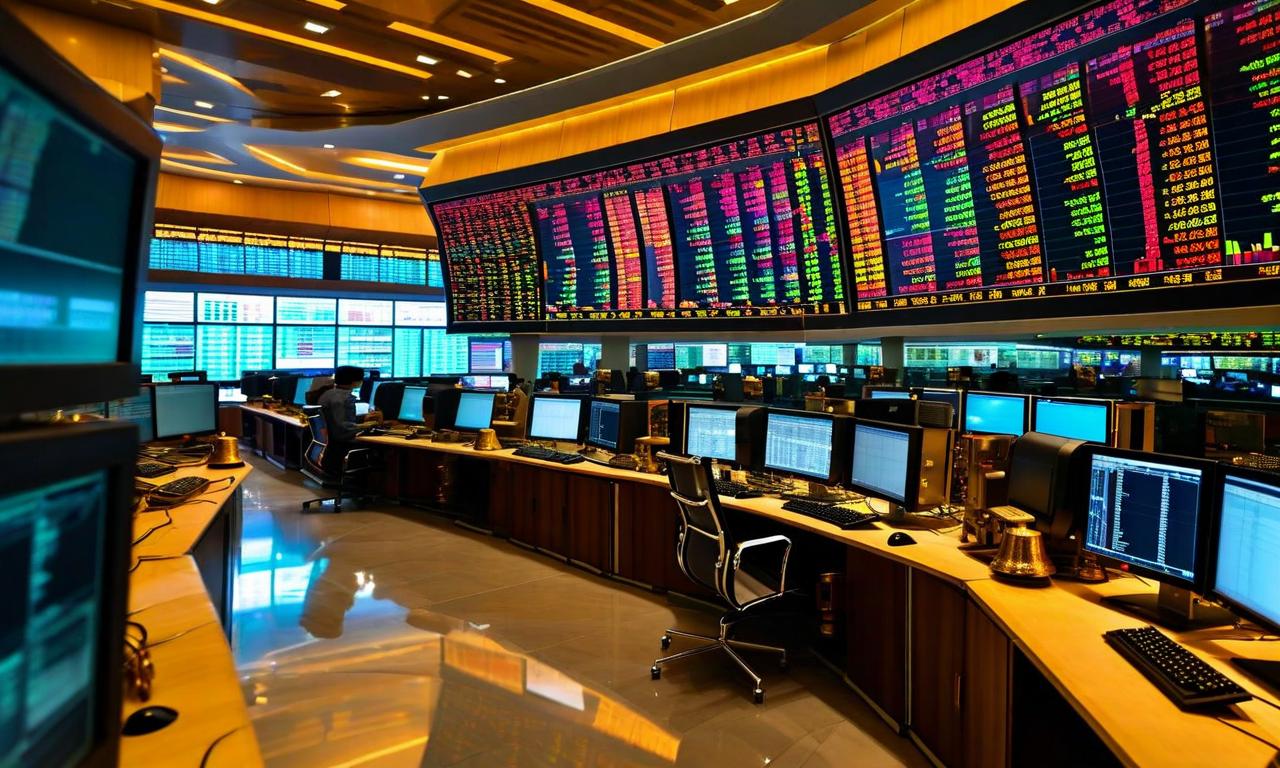Indian Markets Extend Navratri Losing Streak
The Indian equity markets experienced a bearish trend during Navratri, with Sensex declining 1.99% and Nifty falling 1.94% over eight trading sessions. Factors contributing to the decline included concerns over higher US tariffs, expensive stock valuations, and slower earnings growth. Foreign investors withdrew Rs 17,000 crore from Indian equities in the first six trading days. Mid and small-cap segments were more affected, with Nifty MidCap 100 and SmallCap 100 falling 3.49% and 4.05% respectively. Most sectors declined, with IT hit hardest at -7.31%, while PSU Bank and Metal sectors showed slight gains. The RBI's decision to keep interest rates unchanged and provide an optimistic outlook helped snap the losing streak.

*this image is generated using AI for illustrative purposes only.
The Indian equity markets continued their bearish trend during Navratri, as both major indices witnessed significant declines during the festive period.
Market Performance
During the eight trading sessions of Navratri, the Sensex experienced a decline of 1.99%, while the Nifty fell by 1.94%. This downturn follows a pattern observed in recent years, with 2021 being the last time both benchmarks delivered positive returns of over 3.5% during the festival period.
Factors Behind the Decline
The market's poor performance has been attributed to several factors:
- Concerns over higher US tariffs
- Expensive stock valuations
- Slower earnings growth
Foreign Investment Outflow
Adding to the bearish sentiment, foreign investors withdrew a substantial Rs 17,000 crore from Indian equities in the first six trading days of the Navratri period.
Mid and Small-Cap Performance
The decline was more pronounced in the mid and small-cap segments:
- Nifty MidCap 100 fell by 3.49%
- Nifty SmallCap 100 dropped by 4.05%
Sector-wise Performance
| Sector | Performance |
|---|---|
| PSU Bank | 1.37% |
| Metal | 1.03% |
| IT | -7.31% |
Most sectors experienced declines, with only PSU Bank and Metal indices posting gains of 1.37% and 1.03% respectively. The IT sector was hit hardest, suffering a 7.31% decline, primarily due to H-1B visa fee increases affecting Indian IT companies.
Market Turnaround
Despite the overall negative trend during Navratri, the markets managed to snap their losing streak following a positive announcement from the Reserve Bank of India (RBI). The central bank kept interest rates unchanged and provided an optimistic outlook:
- Raised growth forecast to 6.8%
- Lowered inflation estimate to 2.6%
This decision by the RBI helped to alleviate some of the market concerns and provided a glimmer of hope for investors amidst the festive season downturn.
As the Indian equity markets navigate through these challenging times, investors and analysts will be closely watching for signs of recovery and potential opportunities in the evolving economic landscape.





































